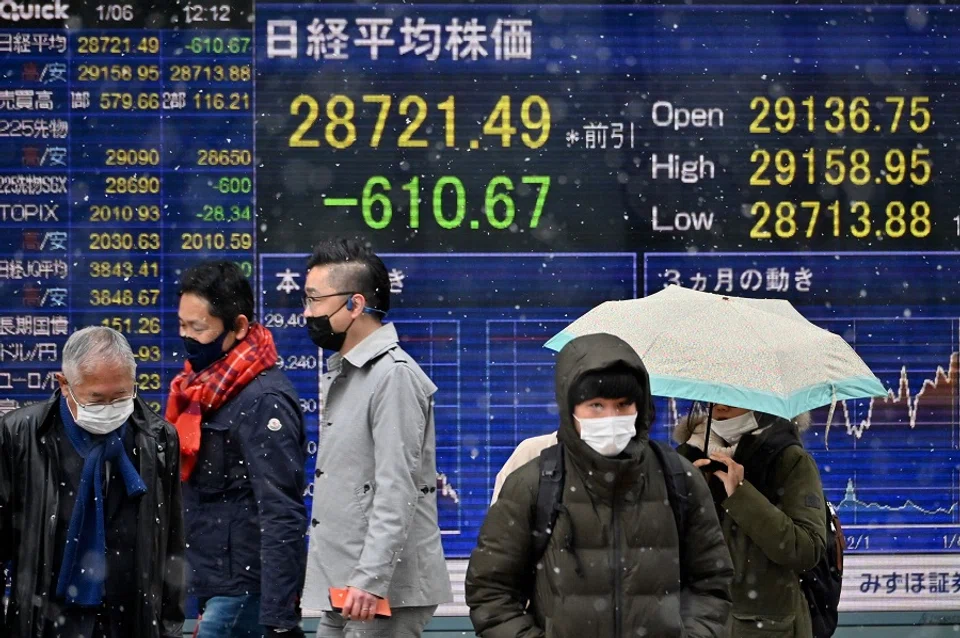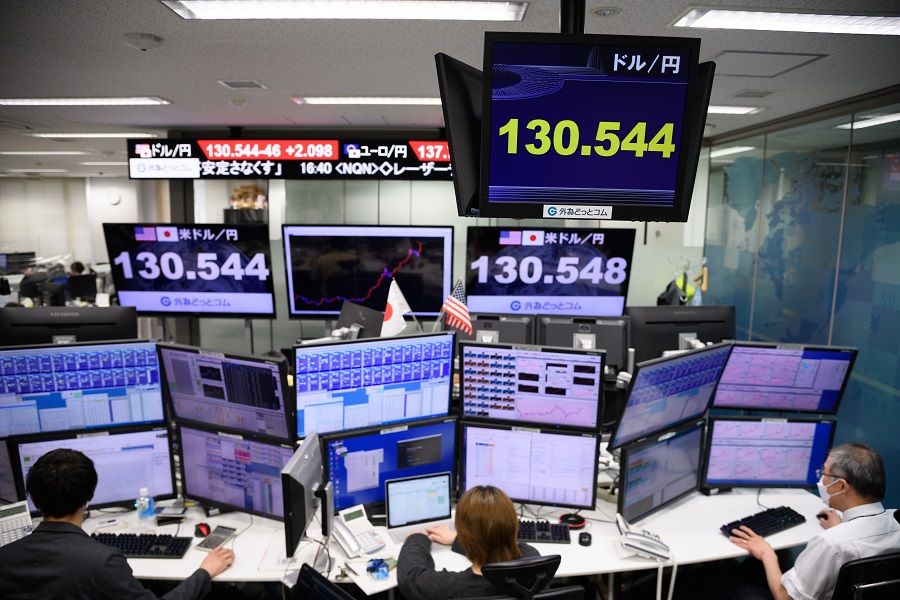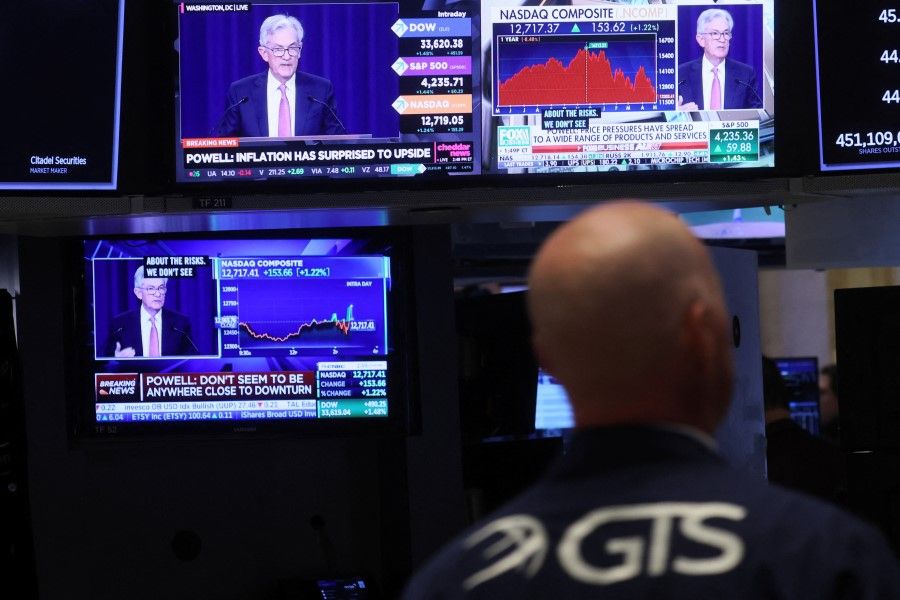Can a sliding Japanese yen survive the Fed's interest rate hike?

The Japanese economy has been trapped in a prolonged slowdown with its ultra-low interest rate policy unlikely to change. In fact, the country has announced after the US Federal Reserve (Fed)'s first post-Covid interest rate hike in mid-March that it would not follow suit. (N.B. On 5 May, the Fed announced a further 0.50% increase in its interest rate, its biggest rate hike since 2000.)
With the Bank of Japan (BOJ)'s decision to maintain Japan's ultra-loose monetary policy and its ultra-low interest rate policy, the devaluation of the Japanese yen is inevitable and unlikely to reverse in the short term, and could only prolong its longest losing streak in 50 years.
Proposal for joint currency intervention
I remember clearly when the Japanese currency weakened from 79.75 yen to one US dollar in April 1995, to 148 yen in July 1998. I dare not imagine just how far the yen, which started at around 100 yen this time, can tumble.
After World War II, the exchange rate of 360 yen to one US dollar was set by the US occupying forces in Japan, and was maintained until the sudden decoupling of the US dollar from gold. The Japanese currency later appreciated by four times to 80 yen in 1995 and then depreciated to half of its value to 160 yen (or to 180 yen, half of 360 yen). All these prove that many possibilities exist in the long term.
... the US has chosen to uphold its "America First" policy even at the risk of hurting Japan.
In the short term, there are speculations that the Japanese government would intervene before the Japanese currency weakens to 130 yen to one US dollar. On 20 April, the BOJ offered to buy unlimited amounts of Japanese 10-year government bonds at 0.25% as yields touched the upper limit of the BOJ's target. Furthermore, during a bilateral meeting on 22 April, Japanese Minister of Finance Shunichi Suzuki discussed the idea of joint currency intervention with US Treasury Secretary Janet Yellen. However, the US rejected the idea.

Suzuki said, "The government has said rapid currency moves were undesirable. What we're seeing now with the yen are rapid moves, so we'll monitor moves closely with a sense of urgency."
This implies that the current rapid depreciation of the yen is causing problems for Japan's economy and that measures should be taken to stop the Japanese currency's fall. Yellen did not agree to intervene through the buying of Japanese yen because it would hurt the US dollar exchange rate and worsen inflation in the US. Clearly, the US has chosen to uphold its "America First" policy even at the risk of hurting Japan.
Joint currency intervention is commonly adopted by advanced economies, as was notably seen in the Plaza Accord of 1985 and the Louvre Accord of 1987. They achieved significant results and operated to the advantage of the US.
In fact, Japan had implemented foreign exchange interventions on its own before, but they were ineffective. In particular, Japan and various ASEAN countries were badly hit by the 1997 Asian financial crisis and the double whammy of international speculative funds and the US government's monetary policies. Coupled with the continuous appreciation of the US dollar, the US reported large capital inflows while the Japanese yen and the Thai baht depreciated sharply.

Sinking deeper and deeper into the financial and economic crises, the Japanese government could do nothing to improve the situation in spite of numerous exchange rate interventions.
Japan is heavily reliant on raw material imports, while its food self-sufficiency rate is less than 40%.
Surging energy prices
The Japanese yen has continued to tumble since March this year. The BOJ already feels the pressure and now the Japanese people are starting to experience increasing pressure in their daily life.
Statistics released by Japan's Ministry of Internal Affairs and Communications on 22 April show that Japan's consumer price index rose 0.8% year on year in March, marking the sharpest rise since 2020. The country's soaring crude oil prices have in turn pushed up food prices, with energy prices surging by 20.8%, the highest increase since January 1981.
Among them, kerosene prices were up by 30.6%, city gas costs increased by 25.3%, electricity prices rose by 21.6%, and gasoline prices increased by 19.4%. These costs have clearly added to the financial burden of Japanese households.
On 26 April, the Japanese government unveiled a 6.2 trillion yen (US$48 billion) emergency economic package that would amount to 13.2 trillion yen when private-sector funds are added.
Generally speaking, lower exchange rates for the Japanese yen would make Japanese exports more competitive, and would be beneficial for companies in increasing production and efficiency, and expanding the workforce. However, Japan is heavily reliant on raw material imports, while its food self-sufficiency rate is less than 40%.
High oil prices coupled with a depreciating yen have led to a spike in demand for the US dollar and an outflow of funds from Japan.
A report released on 20 April by Japan's Ministry of Finance showed a trade deficit of 5.4 trillion yen for the fiscal year 2021 (ending March 2022). Unlike a trade surplus amid a rising yen, a trade deficit amid a depreciating yen is detrimental to the economy. High oil prices coupled with a depreciating yen have led to a spike in demand for the US dollar and an outflow of funds from Japan.

If exports continue to fall while imports keep rising, the trade balance will worsen. Just as a leak in the roof is made worse by unending rain, companies that could have increased exports amid the depreciating yen have run into other troubles.
The global chip shortage has had a major impact on Japan's automobile industry, leading to many companies reducing production. On 21 April, Honda announced that it is planning to cut production by half on two lines in one of its domestic factories by early May due to chip shortages and Covid-19 lockdowns. Toyota also announced on 18 April that due to the impact of semiconductor shortages, it plans to reduce production in May by approximately 100,000 units globally.
Controlling rapid currency depreciation
Japan is highly reliant on imports of consumer goods. Given the depreciating yen and broad increase in prices, the pressure of daily expenses for individuals and households is going up, while spending appetite is shrinking.
The Japanese government has come up with an emergency economic package - it has implemented a 100,000 yen cash handout programme for low-income households that are exempt from residential tax payments, and it is also considering cash handouts of 50,000 yen per child for low-income households.
In a speech at Columbia University on 22 April, BOJ governor Haruhiko Kuroda said that despite the depreciation of the yen, the bank should persist with the current aggressive monetary easing, as there is no risk of an economic overheating in Japan, which makes it different from US inflation.
Indeed, Kuroda is right. But the US's aggressive monetary easing policy allows for unlimited printing of US dollars, and allows its currency to flow to many corners of the world as hot money. Japan cannot match the dominant position of the US dollar.
If Japan wants to be like the US in starting up the money presses to stimulate the economy, it would accelerate the depreciation of the yen. There are differences in the state of the economies, inflation rates, and status of currencies of Japan and the US. If Japan cannot effectively handle the rapid depreciation of its currency, economic depression or even a recession is inevitable.

Currently, Japan hopes to control the rapid depreciation of the yen to ease the pressure of rising import prices, but the US strategy of raising interest rates to drive the rapid appreciation of the US dollar is the main reason for the quick depreciation of the yen.
Right now, Japan is holding the yen at 130 yen to one US dollar, but as the Fed aggressively raises interest rates on 4 May, the yen will again face even greater pressure of rapid depreciation.
In order to effectively appreciate the yen, or rather let the US dollar depreciate, the BOJ needs to invest a large amount of foreign exchange reserves, which would in turn lead to the risk of Japan's foreign exchange reserves shrinking rapidly.
Behind every major crisis is the shadow of the US dollar. For example, the Latin American debt crisis in the late 1970s, the Asian financial crisis in 1997, and the global financial crisis in 2008 triggered by the US subprime mortgage crisis. Simultaneously, the US went from being the world's biggest creditor to the world's biggest debtor, and from having a trade surplus to a trade deficit.
Currently, Japan's foreign exchange reserves are about US$1.46 trillion, the second highest after China. It will be worth observing whether Japan can use this advantage to implement market intervention.
In order to effectively appreciate the yen, or rather let the US dollar depreciate, the BOJ needs to invest a large amount of foreign exchange reserves, which would in turn lead to the risk of Japan's foreign exchange reserves shrinking rapidly. Of course, if the US thinks this is a challenge to the dominance of the US dollar, Japan would be put under greater risk.
As strong winds herald the coming storm, we shall see if Japan can handle the financial storm brought by the Fed interest rate hike. Because soon after a severe depreciation of the yen, the Japanese economy could face rising inflation or even stagflation. If that happens, the Asian economy including ASEAN would face an enormous threat.
